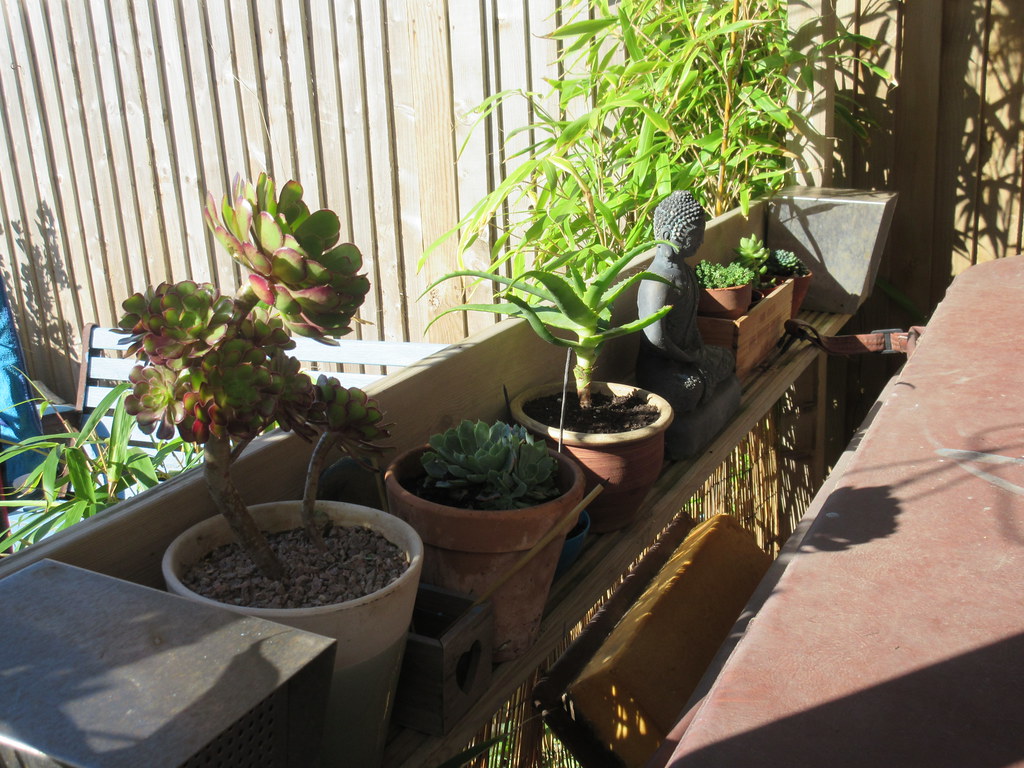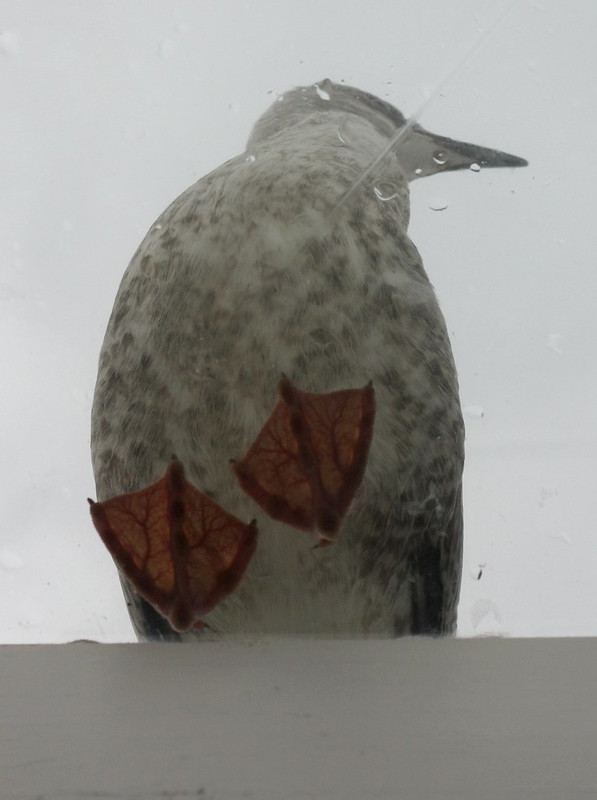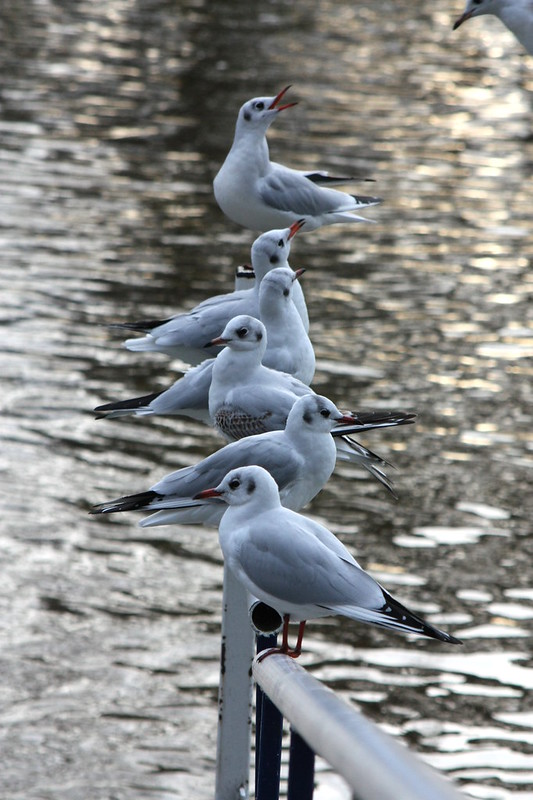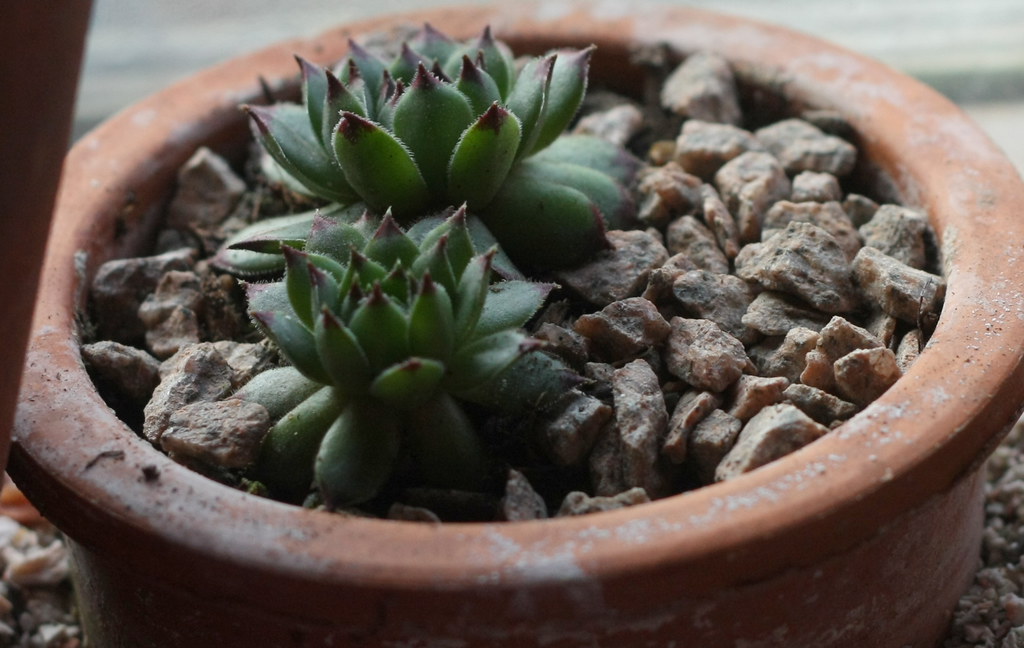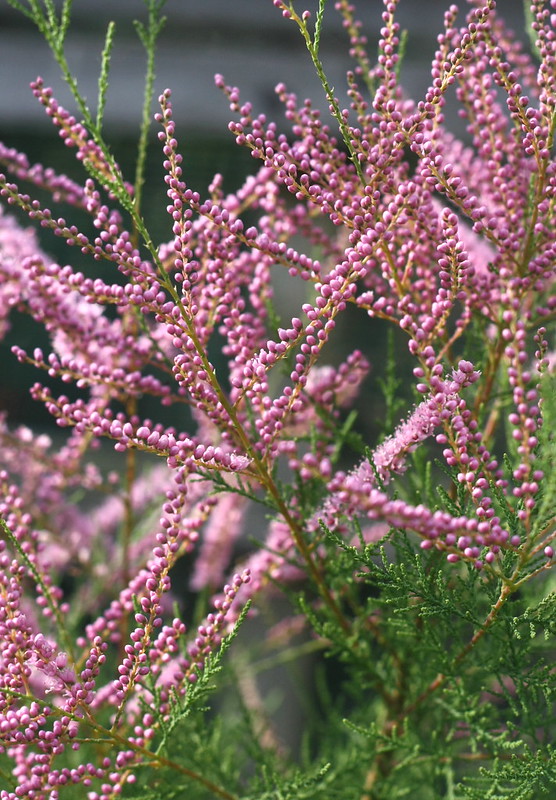Well I’ve not done a lot of garden blogging this year, but I have been busy in the garden! So where to start? Well I’m thinking to start at the beginning and see where I get to!
A is for Aeonium! Due to being ill at the end of last year, I lost the energy for the garden and failed to notice that my much loved Aeoninum hadn’t been brought under cover. As a result it was suffering so much every leaf had fallen off, probably due to the wet as we rarely get a frost. I covered it up far too late and hoped for the best.
Recovering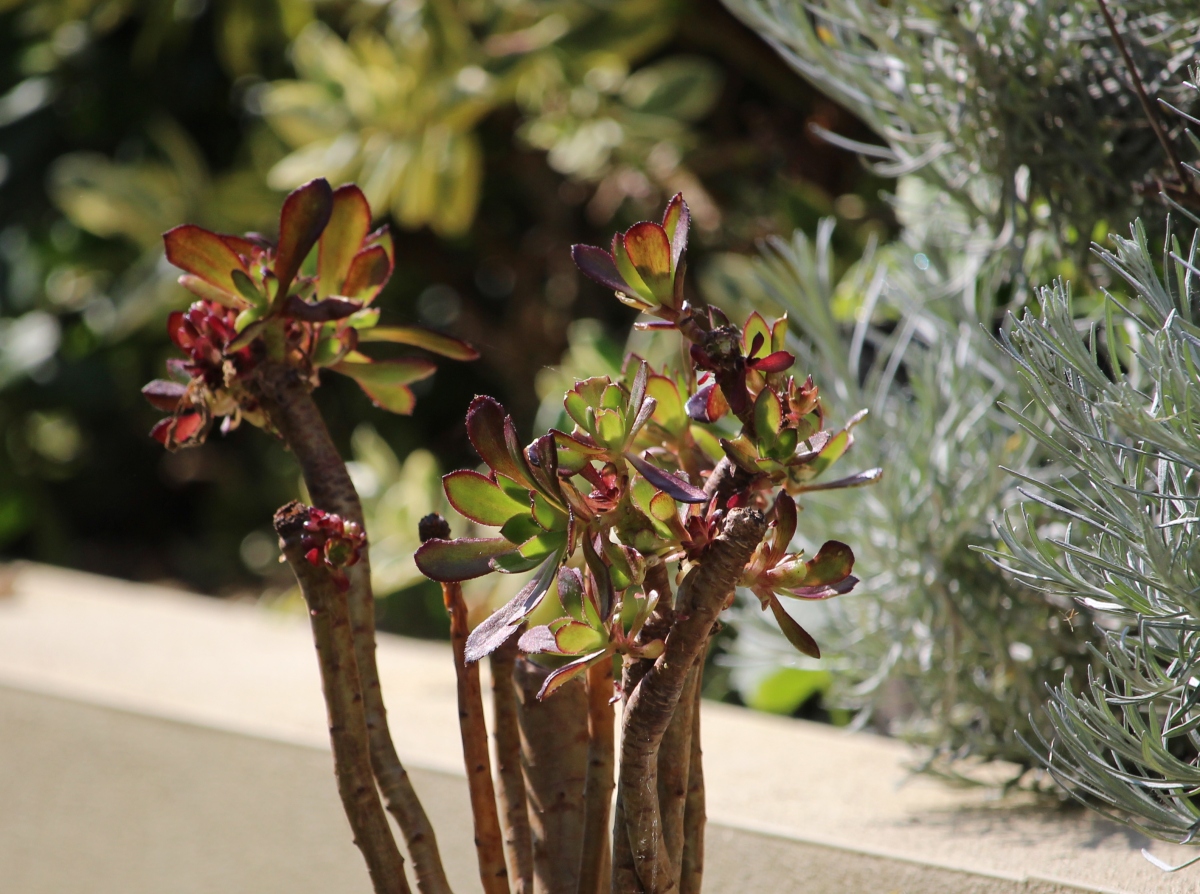
Plants are amazingly resilient. All the missing leaf rosettes returned and a hasty cutting also took magnificently soon with growth soon almost as big as the original, apparently loving being in a small hanging bucket!
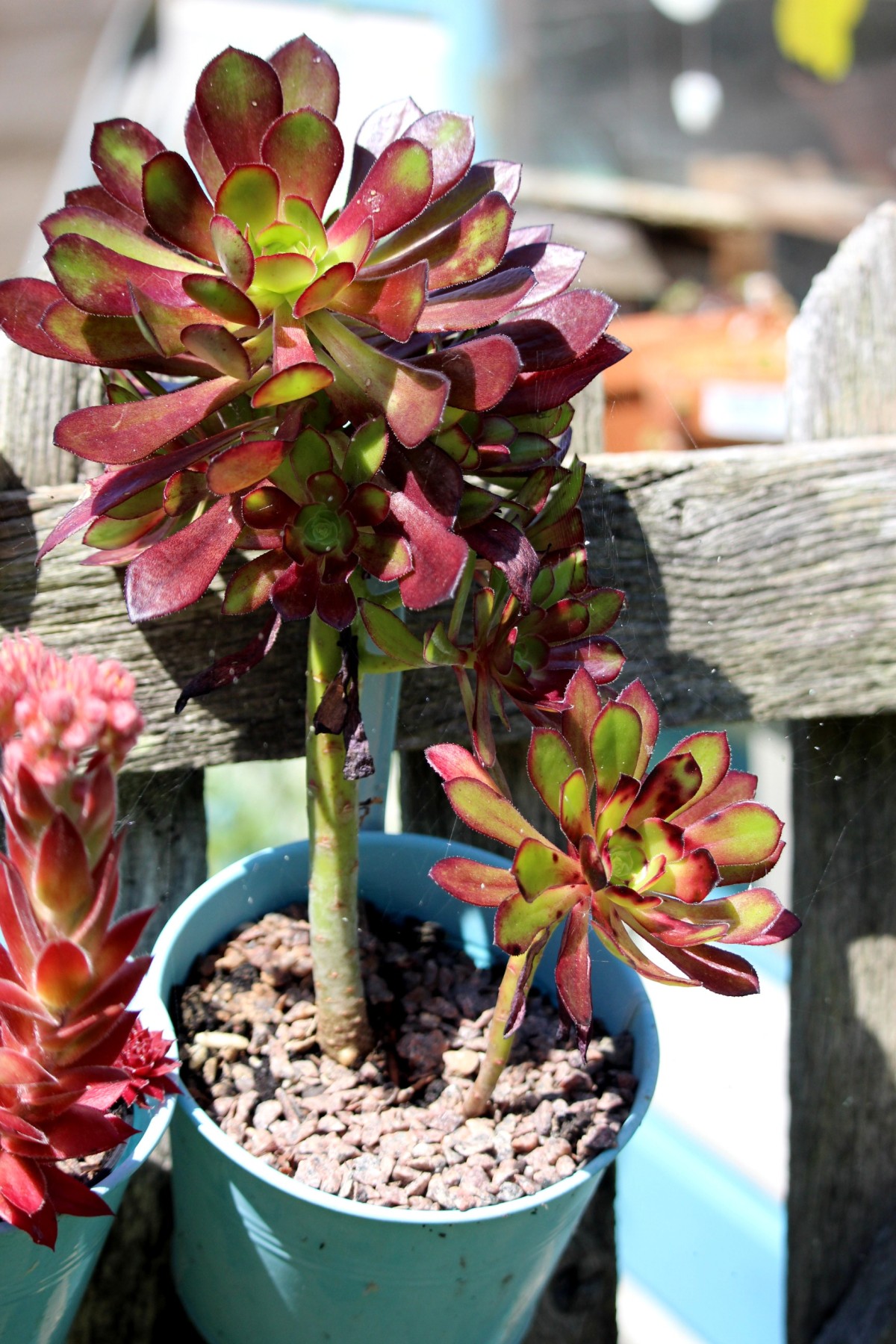
I’ll be taking better care of them this Winter and have already moved some under cover where they’ll only get rained on if it’s blowing at a Northern 45% angle!
The most amazing ones I’ve seen were in Cornwall flowering on the edge of cliffs, but I think the weather must be tropical there!
A is also for Agapanthus which didn’t do all that well again this year, though I noticed the same in a lot of gardens we visited. Last year there were two blue flowers, this year only one, but the white one flowered. I’m debating taking them out of the raised bed and attempting in a pot as I heard they may prefer their roots being restricted a bit. And there is never enough room in that raised bed for all the sun-loving plants!
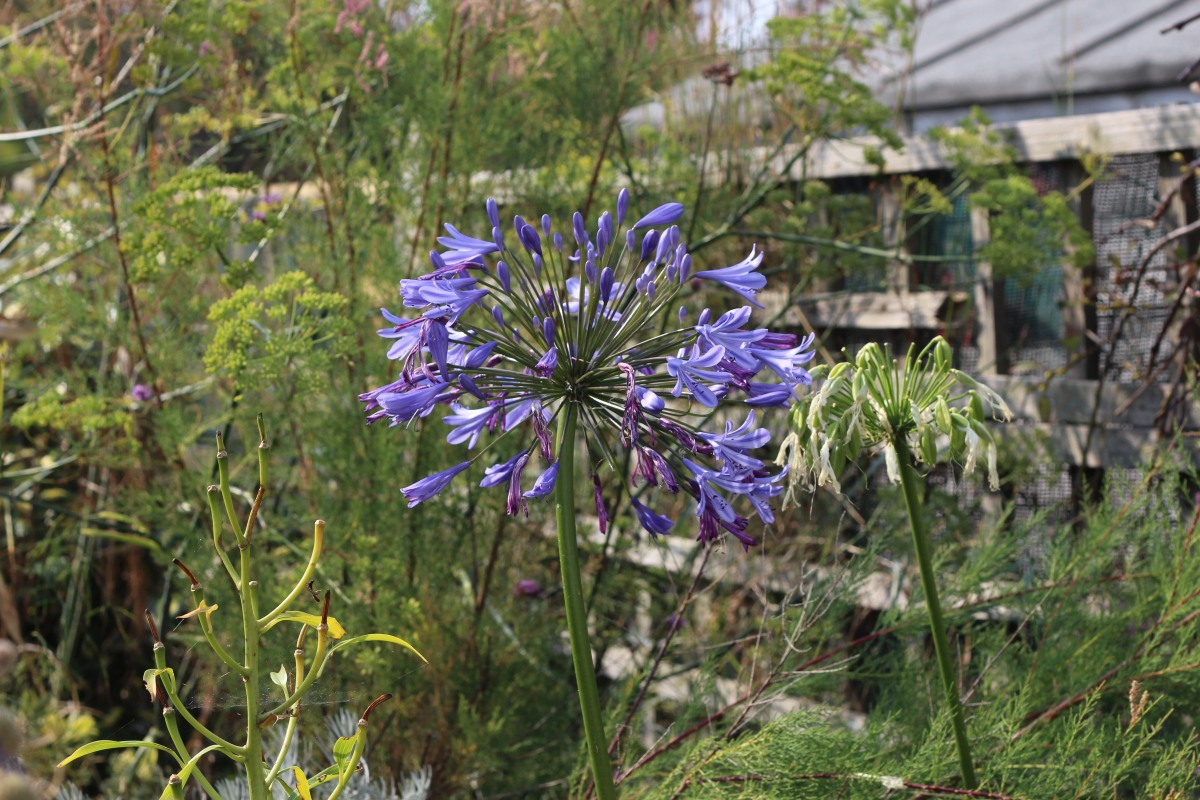
An old favourite Alchemilla Mollis or Ladies Mantle, always a stalwart in the shady spots, those big leaves covered in beads of water after rain! These beads were considered by Alchemists to be the purest form of water and used it in their attempts to turn base metal into gold (hence Alchemilla!)
“The true alchemists do not change lead into gold; they change the world into words.”
― William H. Gass, A Temple of Texts

